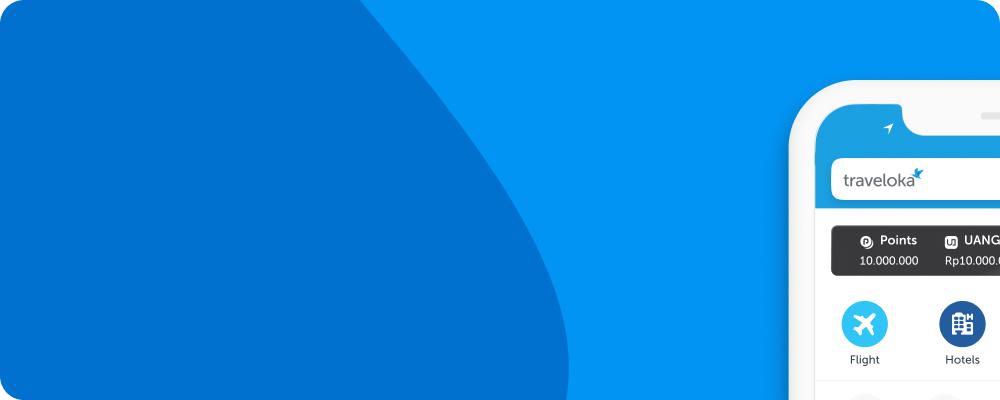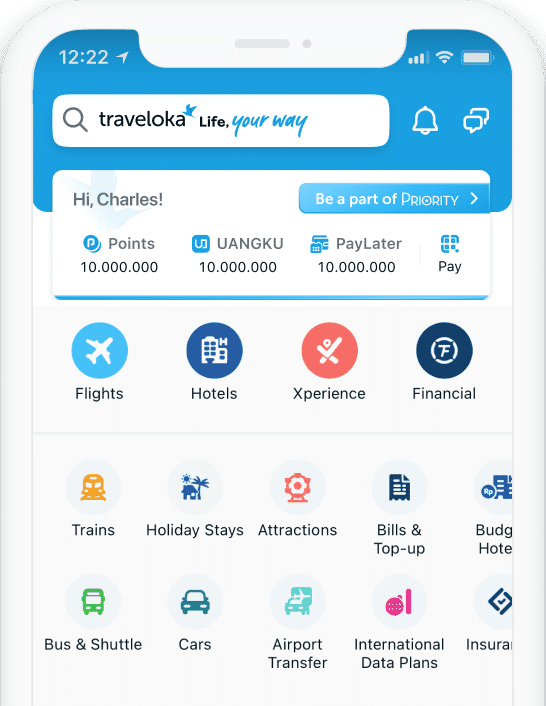
โรงแรม & ที่พัก โกตาบารู ใกล้ฉัน
- Hotel/
- มาเลเซีย(11215 จองที่พัก)/
- รัฐกลันตัน(265 จองที่พัก)/
- โกตาบารู(183 จองที่พัก)
จุดหมายปลายทางที่จะค้นพบ

จ่ายแพงกว่าทำไม
ในเมื่อคุณจ่ายถูกกว่าได้?

โรงแรมยอดนิยม โกตาบารู
Renai Hotel Kota Bharu (Formerly known as The Grand Renai Hotel)
ค้นหาสิ่งที่คุณชอบ
พักใกล้จุดเช็กอินที่น่าตื่นเต้น
มีตัวเลือกมากมาย เหมาะสมกับทุกโอกาส
เกี่ยวกับ
Best Hotels Recommendation in Kota Bharu, Malaysia
Malaysia is one of the most cultural countries with diverse cities. What makes Malaysia so fascinating to live in, as a Malaysian, you must be agree you can explore modern cities as you can enjoy as many natural places, including beaches and jungles.
Kota Bharu, mostly spelled as “KB”, is a town in Malaysia that serves as the state capital and royal seat of Kelantan. As one of the best locations to visit in Malaysia, KB provides many activities and places to visit.
From the attractions to shopping experiences, KB is a perfect place to enjoy due to its city centre. Also, like other cities of Malaysia, Kota Bharu will surely pamper you with tasty local food in food outlets or dining places.
So, it is surely an enjoyment to spend your leisure time exploring Kota Bharu hotels. If you look for the best hotel with the best quality, here are the best recommendations for you, check these lists out!
Hotels in Kota Bharu, Malaysia
1. Perdana Kota Bharu
Looking for a top-quality hotel for business trips or a family holiday?
For the food, the Perdana Kota Bharu offers one of the best of local Kelantanese delights and International cuisine. For the facilities, the hotel got you the swimming pool, gym, and other facilities. Also, you will be given the hotel amenities to fulfill your best experiences of staying at Perdana Kota Bharu.
For the prices, the room rates start from RM320 for the Twin Room for the cheapest one and RM785 for the Suite for extended spacious rooms.
2. Grand Riverview Hotel
The hotel also has the most impressive views in the city with a swimming pool and gymnasium. For shopping and entertainment, you can visit Kota Bharu shopping places within walking distance, namely Parkson, KB Mall, Tesco, Pasar Siti Khatijah, and Cultural & Heritage zone.
You can stay with the starting prices of RM258 for the Premier room and RM468 Premier Executive per night.
3. Holiday Villa Hotel & Suites Kota Bharu
Located in the centre of the city,
The hotel is only 1.1km away from Kota Bharu Mall. For the facilities, the rooms here are air-conditioned and decorated with wooden furniture. They also got you a flat-screen TV and a private bathroom with amenities.
You can choose to stay at Holiday Villa Hotel & Suites Kota Bharu starting from RM185 per night for the Superior Room.
4. H Elite Design Hotel
Going for holiday or business,
You can also get the amenities, including a flat-screen TV, coffee and tea, and linens when making your stay in this hotel. At H Elite Design Hotel, you will be pampered by top-quality four-starred hotel service and premium facilities, including free Wi-Fi, 24-hour security, daily housekeeping, taxi service, and many more. The facilities, including the fitness center, outdoor pool, and kids pool are free to access too.
The room prices start from RM164 per night for the Superior Room at At H Elite Design Hotel.
5. Tune Hotel - Kota Bharu City Centre
Looking for a value for money hotel that is located right in the centre of Kota Bharu?
The hotel offers a five-star quality bed with a cleanly decorated room and environment. Also, they got you Nasken Coffee and Starbucks for sipping your coffee at the start of the day.
For the prices, you need to spend about RM109 for a Twin Room and RM159 for a Double Room.
6. Sutera Inn Prima
Besides the beach, you can also enjoy the famous Taman Negara National Park. You can enjoy its restaurant, and room service, and they got you on-site coffee house inside the hotel. The hotel is very valuable for your money with excellent services.
The price starts from RM89 for the Superior Room per night.
7. Jewels Hotel
Jewels Hotel is one of the best hotels that give you exciting experiences. Enjoy yourself eating at Suasa Restaurant which offers a mixture of local and international cuisines perfect for business trips and weekend getaways.
Staying at Jewels Hotel cost you RM124 for the Superior Room.
Things To Do Around Kota Bharu
From the list above, choose your best-preferred stay at Kota Bharu. But, to make your visit more valuable, don't forget to enjoy its attractions: Pasar Besar Siti Khadijah, AEON MALL Kota Bharu, Istana Jahar, Min Fireflies Garden, Masjid Al-Muhammadi, and many others.
Go get your trip to enjoy your time at Kota Bharu by booking your accommodation via Traveloka. It is very easy, you can start by selecting your hotel choice and room, confirming it, and do the payment. You can choose any payment method that you want to pay. Traveloka allows you to pay by anything, from debit and credit card, ATM, bank transfer, or Traveloka PayLater.
Traveloka also allows you to get yourself other than hotel booking, from entertainment activities to enjoy rides or attractions, and other things you need as your traveling partner.
Popular hotels:
เรื่องน่ารู้เกี่ยวกับ โกตาบารู
จำนวนที่พักทั้งหมด | 183 แห่ง |
เมืองยอดนิยม | Wakaf Che Yeh, Kubang Kerian |
โรงแรมยอดนิยม | Renai Hotel Kota Bharu (Formerly known as The Grand Renai Hotel), Perdana Kota Bharu |
แลนด์มาร์คยอดนิยม | Cahaya Bulan Beach, Siti Khadijah Market |
คำถามที่มักพบบ่อย

ความคิดเห็นจากผู้เข้าพักโรงแรมใน โกตาบารู
ทำไมต้องจองที่พักกับ Traveloka?



เรามีมากกว่าที่พัก โรงแรม







































 Facebook
Facebook Instagram
Instagram TikTok
TikTok Youtube
Youtube Twitter
Twitter Line
Line